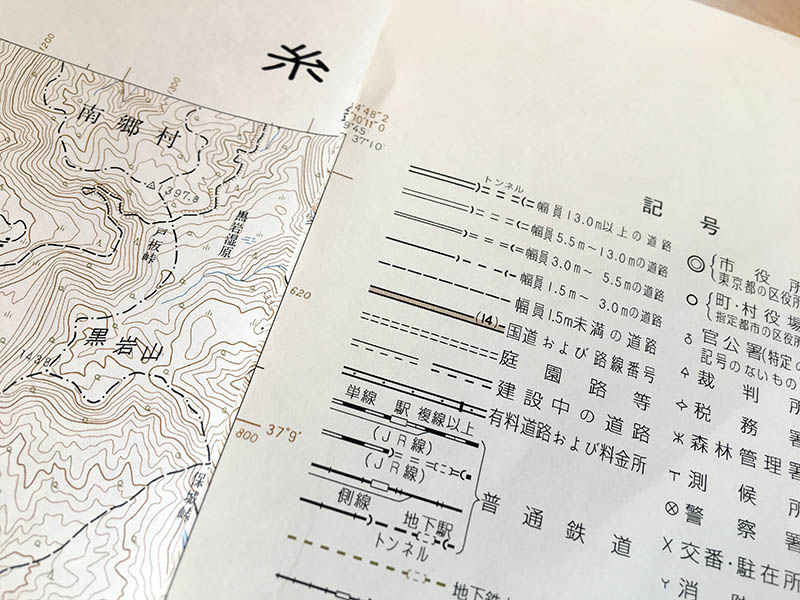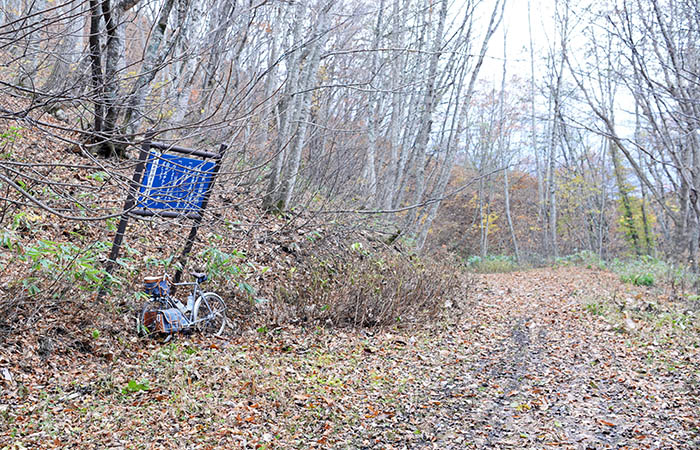The Forgotten Pass

During the second day of our recent cyclotouring trip to the Aizu mountains in northern Japan, we embarked on a little adventure to discover the ‘Forgotten Pass.’

In the evening of the first day, we climbed a small mountain pass, but found to our surprise that a tunnel now traversed the ridge that we had intended to climb.

It was getting dark, so we went through the bore, eager to reach our ryokan (inn) with its hot bath and sumptuous dinner. “Let’s climb the old road tomorrow,” suggested Natsuko.

Over breakfast, we looked at the topographic maps of the area. I was delighted to notice that the maps categorize roads by their width. The narrowest category is ‘less than 1.5 m (5 feet) wide.’ Only the tiny Japanese minitrucks might just barely fit there. That is great information when choosing routes for cyclotouring! But for this ride, we had little to go by – the map hadn’t been updated since the tunnel was built. It still showed a road that was wide enough for 1-2 cars all the way across the pass.

The tunnel was built 10 years ago – as evidenced by a plaque on the portal – and at first, the old road looked in good shape.

But the new pavement didn’t last long. The road to the pass soon turned into a narrow, overgrown gravel path, with just a little pavement poking through once in a while. I was surprised how quickly the road had been reclaimed by nature once maintenance had ceased. It was fun to explore this ‘Forgotten Pass,’ as we named it. The autumn colors provided a beautiful backdrop for our ride, and without pavement or even gravel, we felt truly immersed in the scenery.
 Through the trees, we could see fresh snow on the mountains around us.
Through the trees, we could see fresh snow on the mountains around us.

It was hard to believe that this was a ‘real’ road just a decade ago. The curves were still lined with mirrors to see around the corner and check whether other traffic was approaching. One is barely visible in the center of the photo. A decade of typhoon rains had turned the mirrors completely blind. Not that we needed mirrors – the ‘Forgotten Pass’ was deserted.

Road signs warning of falling rocks had fared better than the mirrors: They looked almost new. We had to laugh at this one: The entire road was covered with soil and rocks. There was no doubt that a lot of rocks had fallen during the last ten years.

The ‘road’ became narrower and rougher, until it was little more than a hiking trail. Judging from the tracks in the soft soil, it was frequented only by deer.

Then we reached the ‘Forgotten Pass.’ The slope was less steep here, and the road was in better shape. Once, there was a parking lot with a trailhead to hiking trails. A sign still reminded visitors that they were entering public forests here.

It was a little easier cycling on the downhill. Dry leaves rustled under our tires. In places we had to portage our bikes where big rocks had fallen onto the road.

And then we were on the new road again, which seemed deliciously smooth and fast after our off-pavement adventure. To think that in ten years’ time, this road would look like the mountain trail we just came down, if it wasn’t maintained continuously!

The ‘Forgotten Pass’ was a poignant reminder that our presence in these mountains is ephemeral. We are only visitors, grateful that we can come here, but the mountains only belong to themselves.


